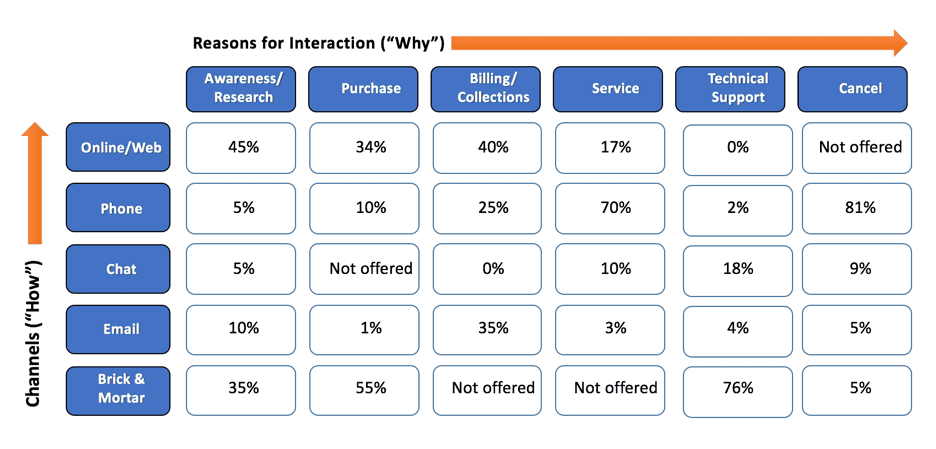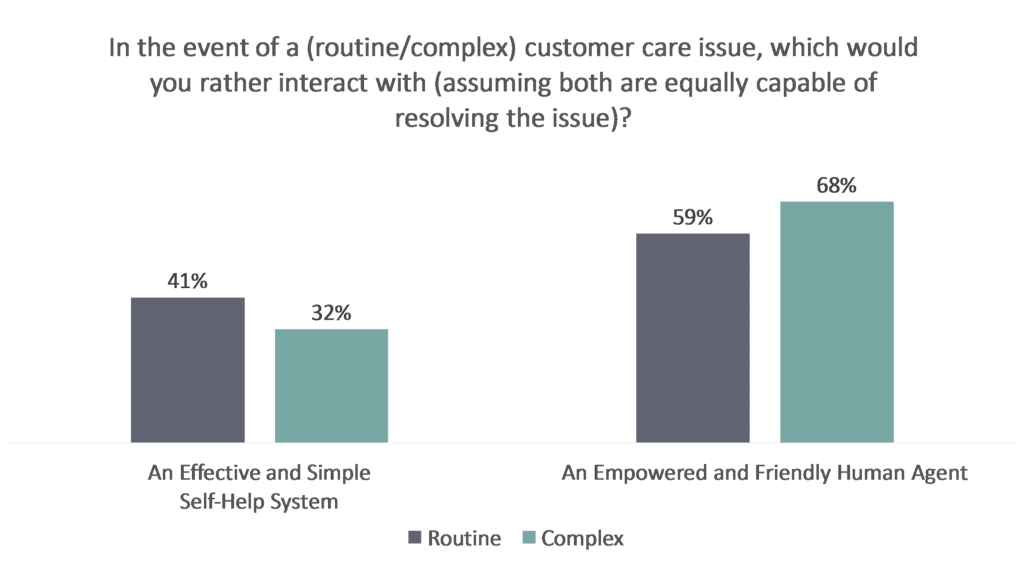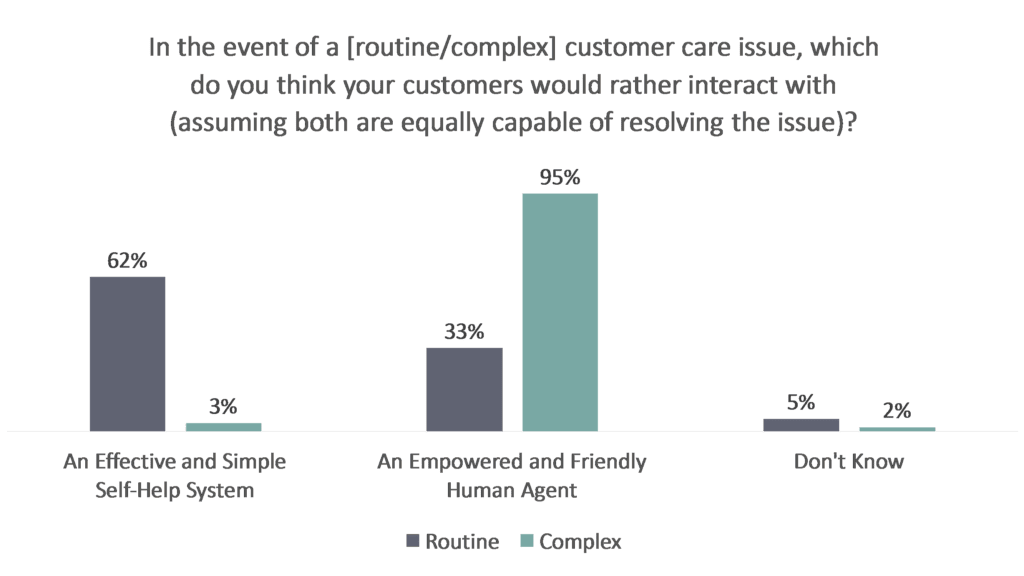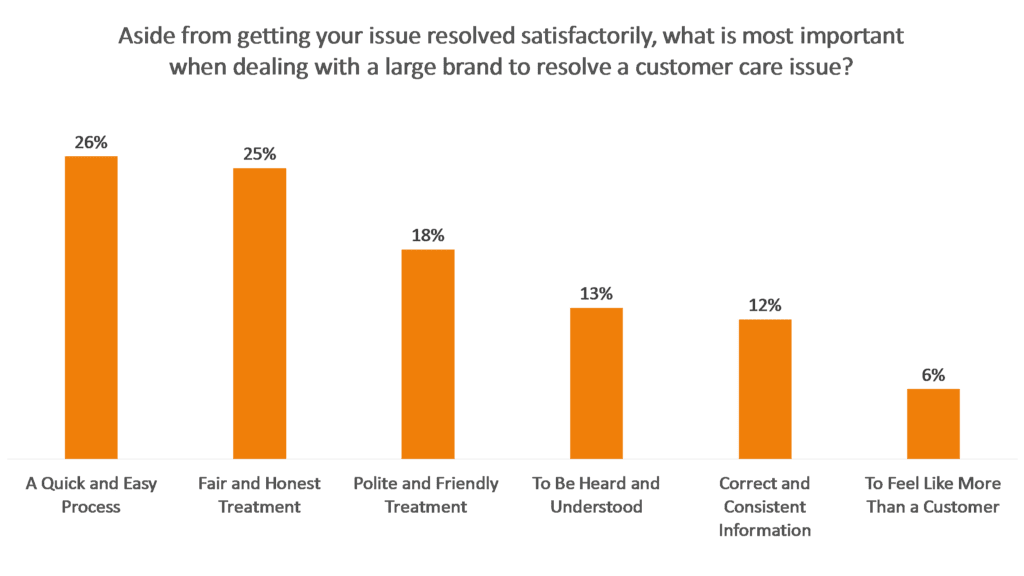
May 16, 2018
“What do our customers really want?” It’s an essential question, yet few brands invest enough time and energy investigating the answer. Instead, many customer experience teams make strategic decisions based on generalizations and assumptions while all too often latching on to the latest customer experience trend.
Understanding what your customers really want may seem like a daunting task, but here are three questions you and your team can ask yourselves to form a foundation for better understanding your customers.
1) Which channels and solutions should we be providing?
This is the first, and perhaps, the most important question you should be asking yourself in your quest to understand what customers really want.
Although consumers continue to use traditional care channels (such as phone, email and face-to-face interactions) in large numbers, preferences for alternative channels of care are on the rise. Alternative channels of care include options such as interactive, social media and mobile care. This fact is supported by CXMB Series research, a series of reports specific to the customer experience industry and produced in partnership between COPC Inc. and Execs In The Know.
CXMB Series results suggest consumers use traditional care solutions more than they’d prefer to. At the same time, consumers are using alternative channels of care less often than their preferences would indicate. While there are a variety of reasons for why this might be the case, the most probable is lack of channel availability combined with a lack of channel capability. If Consumer A prefers to use online chat to resolve an issue but online chat isn’t available, they might have to settle for a phone call. Likewise, if Consumer B has grown accustomed to being told they can’t get a particular type of issue resolved via social media, they might just forget about trying social media and instead visit a store, send an email, or call.
Of course, figuring out which channels and solutions to provide isn’t a “one size fits all” situation. So, how can you and your organization figure out which channels and solutions your customers want to use? One suggestion: take a customer-centric approach to channel management. And while this approach is covered in great detail in a four-part blog published in October 2017 (which can be found here), the foundational steps of taking a customer-centric approach to channel strategy are as follows:
Step 1: Ask which channels are currently offered and which channels customers are actually using. Building a channel matrix is a great way to accomplish this.

Figure 1: Channel Matrix On the left side, you will find the various channels currently offered (the “How”). Across the top, you will see the different types (or reasons) for interaction (the “Why”). The percentages represent which percentage of the different interaction types occur in each channel.
Step 2: Find out which channels customers want and, just as important, what capabilities they expect out of those channels. This information can be found in a variety of ways, including benchmarking competitors, consumer research, customer surveys and focus groups.
Step 3: Understand how current channels and solutions are performing. This can be done by plotting customer satisfaction and dissatisfaction scores in a CX Matrix as well as by exploring the current customer experience through customer journey mapping.
Step 4: Identify gaps between what customers want and what is currently offered; take corrective action to ensure available channels and channel capabilities match well against what customers want and expects.
2) Do our offerings match the channel and interaction preferences of our customers?
Interaction preferences entail many specifics. For instance, would customers rather be placed on hold for a live person, be placed in a call-back queue, or be transferred to an IVR system to self-service? For the purposes of this post, focus will be placed on consumer preferences between assisted and unassisted customer care interactions.
Turning to specific results from CXMB Series research, since 2015, consumers have been asked about their assisted versus unassisted interaction preferences. Each time the question has been asked, the results have been the same: consumers, regardless of interaction type, generally prefer to interact with a person versus a machine in resolving issues. This result holds true whether the issue being tackled is routine or complex. Results from the 2017 Consumer Edition of the CXMB Series are as follows (Figure 2):

Figure 2: 2017 CXMB Series Consumer Edition
As illustrated above, the consumers’ preferences for assisted over unassisted interactions range from 2-to-1 to 3-to-2, depending on whether the issue is routine or complex. These results also hold true when the survey answers are simplified to either “self-help system” or “human agent,” doing away with adjectives like “effective” and “friendly.”
But what about corporate opinions on the matter? Well, that’s where things get interesting. Starting in 2017, a similar question was introduced into the CXMB Series Corporate Edition survey (Figure 3). Results paint a pretty clear disconnect between corporate and consumer perception regarding interaction preferences.
Corporate respondents do grant that their customers might want an assisted interaction in the event of a complex issue, with 95% responding that their customers would want to interact with an agent in such cases. This is a bit of an overshot to be sure as only 68% of consumers indicated they’d prefer to interact with an agent in the event of a complex issue. But where the corporate response really goes off course is for routine issues. In this regard, only 33% of corporate respondents thought their customers would want to interact with an agent. Looking back to Figure 2, even if the issue is routine, 59% of consumers would still rather interact with an agent, versus 41% who would rather interact with a self-help system.

Figure 3: 2017 CXMB Series Corporate Edition
Although this is just a single piece of the larger interaction-preferences puzzle, it well illustrates how consumer and corporate perception can be misaligned. Rather than speculate and assume, your company would benefit by simply asking your customers about their preferences. Gaining insight into how customers want to interact is especially valuable as you make big decisions about which technologies and strategies to invest in. If a large percentage of a brand’s customers prefer assisted channels, should you really be investing a large chunk of your funds into automated, self-help solutions, while at the same time drawing down resources to assisted channels? How might such a move impact the experience of your customers?
Likewise, you also need to consider the impact of forced channel shifts. Often this occurs when one channel in unable to resolve a particular type of issue, forcing the customer to shift to another channel. Time and again, research has shown that these types of redirects result in measurably lower customer satisfaction and resolution rates. You can guard against these events by ensuring consistency and robust resolution capabilities across solutions.
3) Do we understand what’s most important to our customers?
Deciding which channels and solutions to deploy is a major consideration, but it’s not the only thing you need to be thinking about. You also need to understand what your customers expect from the process.
Of course, every customer wants their issue resolved, but they also have specific expectations about how the process should go. Some customers value ease above all else, while others want brands to invest the extra time and energy to make them feel valued. In a result from the 2017 CXMB Series Consumer Edition (Figure 4), it can be seen just how varied consumer opinion is on what matters most.

Figure 4: 2017 CXMB Series Consumer Edition
Although this question was asked of the general public, these results will likely vary by factors such as demographics, product type, and even brand. For instance, customers of products like automobiles might just want their issues resolved with expediency and professionalism. Conversely, a customer of an entertainment product, like a video game, might value making a personal connection with the brand.
So, how can you learn which drivers of the customer experience matter most? Customer feedback. Like channel preferences, drivers of customer experience can be captured through surveys, focus groups and other direct input. Additional insights can also be gained from conducting an analysis of dissatisfied customers, a review of complaints and an evaluation of feedback from frontline staff. Ask customers what they value. Ask agents what customers value. Often times, a byproduct of taking such an approach is the discovery of issues with process or policy.
The Stakes Are High
More than ever before, your organization and those like it are relying on delivery of an exceptional customer experience to differentiate you from the competition. If you know what your customers want and can deliver on those preferences, you will hold a distinct advantage over the competition. The only way to truly get there is to ask the right questions, listen to what your customers have to say, and take appropriate action.